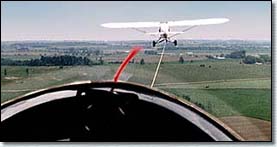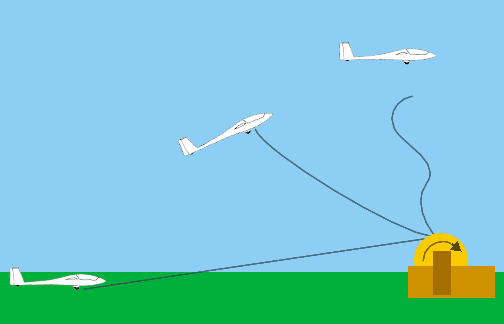THE TOWS: To begin the flight a sailplane must achieve its initial height (potential energy). There are two predominant means of launching a sailplane: aerotow and ground launch . AEROTOW: WINCH LAUNCH :
A ground launch usually involves a winch . The winch has several thousand feet of cable attached to the sailplane's center of gravity, usually located under the nose of the sailplane. As the winch reels in this cable, the sailplane starts rolling, gets air flowing over its wings, generates lift, and takes off. The sailplane climbs at a very steep angle, similar to launching a kite. At altitude, and while there is still 1000+ feet of cable or more left, the sailplane pilot will release the rope and fly away. Another form of ground launch is an auto launch . The method is similar to the winch launch, but where as the winch is stationary and winds the cable in, the autotow involves forward motion by a vehicle pulling the sailplane SELF LAUNCHING GLIDERS
|
||||||||||||||||




